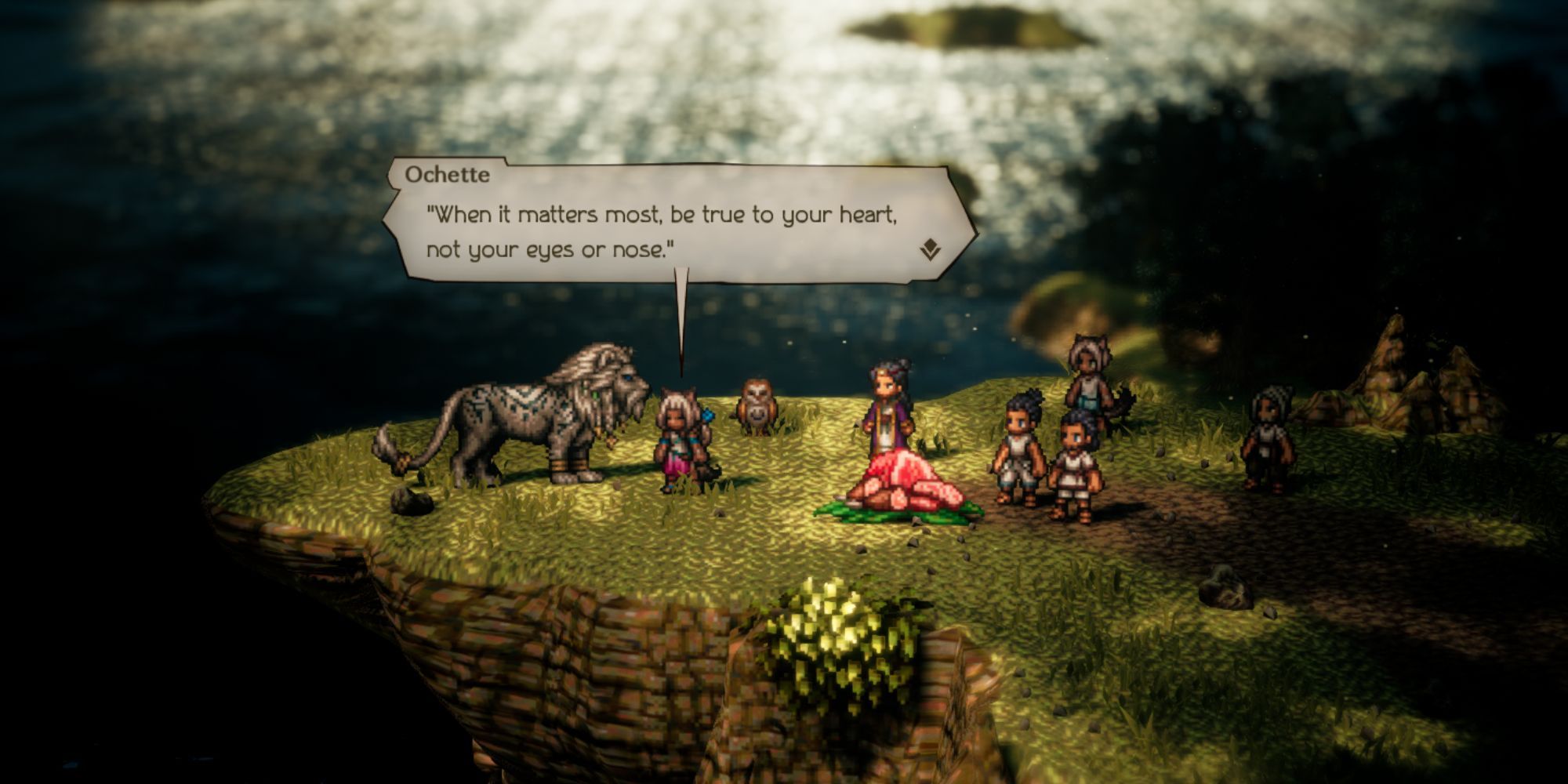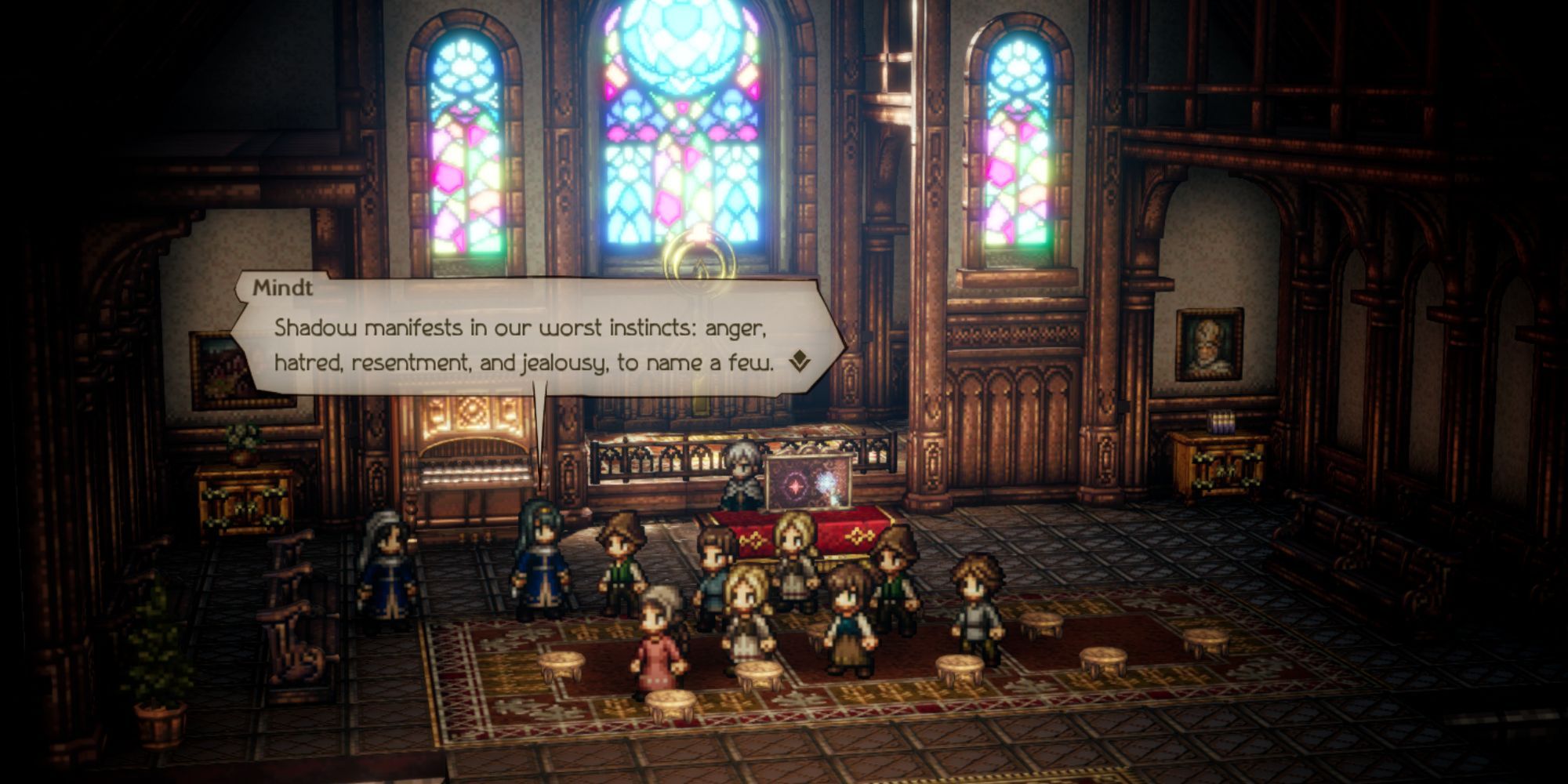I’ve Played The Prologue To All 8 Octopath Traveler 2 Stories
Just meeting one or two characters in the Octopath Traveler 2 demo was never an option for an obsessive like me; I had to catch meet them all, every single one of the game’s eight protagonists. To say that I was thoroughly impressed with their individual stories would be an understatement – in fact, I found the Octopath Traveler 2 demo to be a fully realized game in and of itself, presenting eight rich and compelling backstories with mature themes rarely seen in JRPGs these days.
There are now eight different characters with separate stories, but still fitting those classic JRPG archetypes–the dancer, the hunter, the scholar, and so on. The Octopath Traveler series differs from classics in how its style of play leans way more into immersive sim territory than a typical JRPG; you can do everything with NPCs, from recruiting to bribing to stealing or even shaking your dancer’s booty to make them follow you willingly.
All is fair, even actively encouraged, if you want to survive in the game’s deceptively harsh world. Across the several stories in this unthinkably rich demo, I pulled off a daring prison break, I got mixed up with a shady mafia-like group, fought in a Sengoku-style war, and even got involved in an ancient tribal conflict involving talking animals.
I’m sure you’re wondering why there are so many choices. Well, for one, it’s just plain fun, but more importantly, the choices you make can affect the story outcome (whether you choose to buy or steal an item for example). Octopath Traveler 2 offers even more character-specific options compared to its predecessor, like the ability to assassinate people instead of just stealing, or to befriend monsters instead of provoking them. I’m not entirely sure if these extra actions have long-term consequences here, but I did notice a couple of interesting things about these new abilities.
First, these new nocturnal abilities are only available at night as part of the game’s newly added day/night cycle. Second, they’re specifically designed to match each character’s unique personality, or more like their darkside, rather than just their class or profession.
These grand ambitions, along with the means you use to achieve them, are filled with moral complexity that you just didn’t get in the original game.
For example, in the cleric’s prologue, I find Temenos–who is supposedly devoted for the church–secretly harboring doubts about people and religious deities, making him something of a dark cleric turned detective. He uses his skills to gather clues and solve crimes, even coercing people to help him. Then there’s Osvald, a scholar known for his upright nature, but not afraid to get his hands dirty and use shady tactics to get what he wants, such as blackmailing others or beating them up for all their belongings. Still, considering what each of them has been through, their actions don’t feel contradictory, but more realistic and layered than those of their one-dimensional predecessors in the original game.
Every character in Octopath Traveler 2 starts out with a happy, or at least fairly stable, life. The hunter Ochette, for instance, is hailed as a source of pride in her village for her ability to provide sustenance, while the talented dancer Agnea is the spitting image of her mother, the legend of her hometown. But later in the prologue, some of these pure and gifted souls have their lives derailed by harsh circumstances, such as the scholar Osvald being imprisoned for a crime he didn’t commit, and the apothecary Castti losing her memory, ultimately forcing them to reevaluate their life goals and discover a new understanding of themselves and their relationship with the world.
All of their three-hour prologues can be summed up in what I would call a sense of Weltschmerz, a German term that encompasses the pain and sadness that individuals feel in response to the injustice of the world and their social circumstances. In the previous game, the characters were usually driven by personal motivations such as revenge or finding a personal purpose, but here, the characters solve problems that are bigger than themselves, and embrace greater and more benevolent ideals.
We see that in Partitio, the merchant who vows to end poverty in the world after experiencing a harsh period of penury. Master Samurai Hikari also becomes disillusioned with a world filled with violence and pain after seeing his family fall victim to power and tyranny, and pledges to end the bloodshed forever. These grand ambitions, along with the underhanded means they use to achieve them, are filled with moral complexity and depth that you just didn’t get with characters like the original game’s Therion, who was defined by stealing, or the warrior Olberic, who would challenge everyone to duels.
Every cutscene in Octopath Traveler 2 is breathtaking. The way it uses the night atmosphere in key moments, along with other lighting techniques and special weather effects to create elaborate set-pieces feels out of this world. In addition, the inclusion of insert songs, beautiful dances, trials, wars, and other elements added value to these stories, leaving a powerful impression.
When I saw Agnea’s last dance-with vocals-as a farewell to her hometown, or Throné the Thief being forced to kill her brothers-in-arms in the rainy, dark night, I felt a resonance that was right up there with Final Fantasy 6’s opera scene or Final Fantasy X-2’s Thousand Words concert. Like the first game, the stories here deal with some heavy stuff like murder, racism, and betrayal, but it is the execution that really carries these themes.
Each of Octopath Traveler 2’s demo prologues has a self-contained three-act structure, each one beginning with a peaceful prologue, building to an emotional climax and a big boss fight, and ending with a conclusion that leaves you thinking and wanting more. This is quite a contrast to the prologues in the first game, which felt almost like a tease, and it was hard to form a perspective on each story from the prologue or get invested until very late in the game. Perhaps because this structure provided a clear story flow, promising payoffs, and involved decisions like choosing my companion animal in Ochette’s story or my sidekick NPC in Agnea’s tale, I never really got bored.
While the prologue chapters allow players to experience each character’s story individually, the full game of Octopath Traveler 2 aims to have players enlist the help of other protagonists to achieve closure for all of them. I haven’t yet gotten to experience the promised crossover stories that are supposed to help make the characters feel more connected, but I did witness some key story characters appear across multiple prologues, albeit with minor roles, like the traveling apothecary Malaia appearing in Partitio’s story–though I don’t know if this will build up to something bigger down the road.
I’m excited to see how each character’s story unfolds, and it feels like the groundwork has been laid for a truly engaging and cohesive narrative. In the wake of this promising demo, I can’t wait to embark on the full adventure and see the characters’ journeys come to their ultimate conclusion on February 24th.



